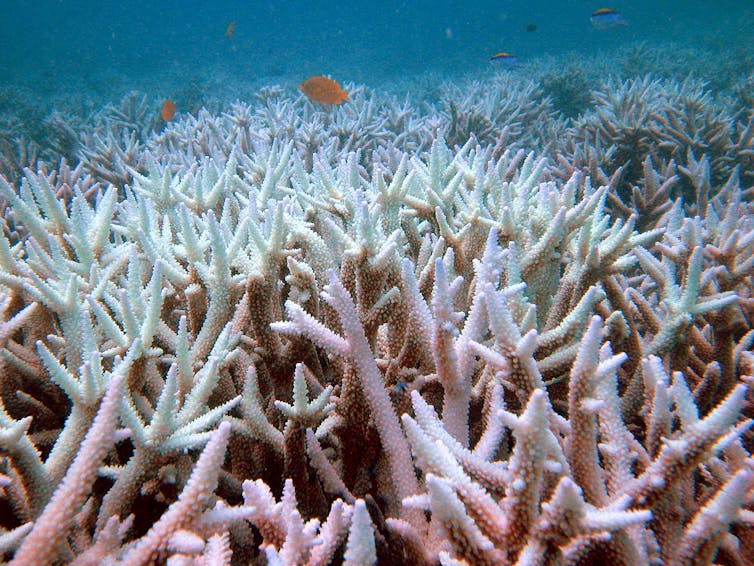Nearly all the world’s governments and vast numbers of its people are convinced that addressing human-induced climate change is essential if healthy societies are to survive. The two solutions most often proposed go by various names but are widely known as “green growth” and “degrowth”. Can these ideas be reconciled? What do both have to say about the climate challenge?
The crude version of green growth – the solution that dominates the discourse of developed countries – is essentially that technology will save us if we get the incentives right. We can stick with the idea that economic growth is the central determinant of human flourishing, we just need technological fixes for unsustainable industrial practices. These will emerge if we get prices pointing in a green direction, which is first and foremost about carbon taxes.
Yet this sort of thinking still seems head-in-the-sand. Yes, the emissions intensity of per-capita GDP growth is generally falling, in part because added economic value increasingly comes from ideas not widgets.
Sweden, for example, has increased its GDP by 76% but its domestic energy use by only 2.5% since 1995. But we are still missing carbon reduction deadlines by wide margins and struggling to enact meaningful carbon pricing.
Eco-socialism and political suicide: the caricature of degrowth
The crude version of degrowth is that to ensure sustainability, GDP must contract. Endless growth got us to where we are, and endless growth will kill us. We need to throw out the status quo and make our revolutionary way to eco-socialism. Rich countries need to stop where they are and transfer wealth to poor countries so we can equitably share what we have.
This sort of thinking is easily caricatured as political suicide and more likely to undermine enthusiasm for sustainability than achieve it.
Read more: Is nuclear the answer to Australia's climate crisis?
Yet these caricatures can be easily dismissed. While it’s hard to pin down exactly what each camp stands for, since they represent amorphous agglomerations of ideas in a fast-moving discourse, it’s clear many advocates of both green growth and degrowth are sophisticated in their views and share many points of agreement.

Where green growth and degrowth agree
The first is that contemporary industry is too environmentally intensive – it crosses multiple planetary boundaries in its carbon emissions, ocean acidification, nitrogen, phosphorus loading and so on.
Second, to avoid ecological collapse, sectors such as fossil fuels, fast fashion, industrial meat farming, air travel, plastics and many more need to draw down their economic activity.
Meanwhile, other sectors need to grow. These include clean energy, obviously, but also biodegradable materials, green steel and pesticide-free agriculture, on and on. Effecting this structural transition will require both carbon taxes and more muscular industrial policy of the Green New Deal sort.
Read more: Too hard basket: why climate change is defeating our political system
Third, environmental damage is both licensed and exacerbated by a narrow policy focus on gross domestic product (GDP). We need to shift priorities away from GDP and towards frameworks and budgets – such as those used in New Zealand, the Australian Capital Territory and other places – that do a far better job than GDP does of measuring whether we are using our resources effectively to advance human wellbeing.

And many of these wellbeing goals can be achieved using a fraction of the wealth of advanced nations. For example, Cuba, with about an eighth of the GDP per capita, has similar life expectancy and literacy rates to the United States.
New ways to measure and increase human wellbeing
A complementary approach is to measure comprehensive wealth – financial, natural, human, and social – rather than income. If economic activity substitutes a relatively small amount of financial capital concentrated in few hands for a huge amount of natural capital, then it isn’t sustainable nor does it increase total wealth.
Finally, we need to measure productivity – the extent to which we can do more with less. Economic growth models stress that only long-run improvements in productivity lead to sustained increases in wealth. Simply increasing investment, of the kind associated with extractive industries, provides only a transitory boost.
Read more: How to beat 'rollout rage': the environment-versus-climate battle dividing regional Australia
Another virtue of productivity growth is creative destruction: when innovation clears out outmoded industries, ideas, and ways of working. Today creative destruction is held back by the power of vested interests, notably in fossil fuels, to lobby governments to slow the industrial transition required to address climate change.
Quality of life frameworks, wealth accounts, and productivity growth all have problems and present measurement difficulties, but they point us in the right direction. They help us to understand GDP as a means, not an end. Twentieth century statistics cannot measure 21st century progress.
Read more: Australia's new dawn: becoming a green superpower with a big role in cutting global emissions
Green growth and degrowth advocates also agree that getting people to practise less carbon intensive lifestyles, especially in rich countries, is politically and culturally difficult. Witness the recent outcry in Spain when the government legislated that public and commercial buildings could not be cooled below 27 or heated above 19 degrees respectively.

That’s why sweeteners are fundamental to the political logic of Green New Deals: for example, the proceeds of carbon taxes can be returned to households as compensation.
Where green growth and degrowth disagree
What green growth and degrowth advocates disagree most about is how deeply we need to alter our political economy to survive climate change.
Green growth is broadly optimistic about the capacity of liberal democracy’s incremental style to get the green transition done in time. It has faith in markets, and even as it recognises the need for green industrial policy it is cautious about government’s ability to micromanage it.
Degrowth believes something more radical is in order, with equality at its core. We need to understand what is “sufficient” for people to live good lives, and then redistribute from people who have far more than they need to people who have much less.
This approach would include the provision of energy-efficient social housing, and international aid for green development. Government must adopt the climate transition as its mission in the manner of winning a total war. It must get involved in the economy and society in a big way, including by regulating things like private jets and low emission traffic zones.
The problem for degrowthers is that getting such a radical agenda off the ground requires first and foremost a change in public values. But the movement’s focus on international political economy – its tendency to target its efforts at bureaucrats and quasi-governmental agencies like the Intergovernmental Panel on Climate Change (IPCC) – undermines cultural change by feeding populist narratives about technocratic overreach.
Spain’s experience illustrates that citizens haven’t internalised the sorts of lifestyle changes degrowth believes are required. Politically hopeless slogans like “degrowth” that don’t even capture the essence of the movement need to be tossed out, and much more attention needs to be given to marketing the experience of living green in sustainable societies.

